How to reduce process control costs by managing sensors and transducers more effectively
20th February 2013
Source:
Burkert Fluid Control Systems
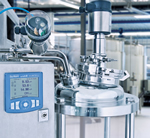
The first areas that instinctively spring to mind when a process professional is challenged to reduce process control costs are usually purchase cost and installation. Why not? They are the obvious ones and they are the easiest to define and list, when viewed as part of a system however, purchase cost plays only a small part; managing the multiple signals from sensors and transducers differently can radically affect the total cost of ownership for that process system.
Careful analysis conducted by Volker Erbe, Sensors Product Manager at process control specialist Bürkert Fluid Control Systems investigating the whole life costs associated with field devices such as sensors, transducers and the control platform they are connected to, has revealed there could be far larger savings to be had from making changes to product selection at the initial stage of a project, changes that can have huge cost repercussions that occur during the less obvious operational phase, those such as training, start-up, process operator time, service, repairs and documentation.
Volker carried out the research to help define costs more accurately for Bürkert process field devices; he then identified where costs lie within a whole life process application and quantified the results of making better decisions early on in a project.
The initial question Volker started with was: “What part do field devices play and what proportion of the cost associated with them can be saved?”
‘The quantity of field devices in process applications is increasing almost exponentially, based on a higher level of automation in today’s processes. Our figures show that in a typical process application in food, pharma or general industry, about 20% of the overall investment costs are for sensor based measurement devices and up to 75% of the TCO are costs in the operational phase which we estimated at 15 years usage time.
Overall process control costs and the possible cost reduction potential is of course dependent on variables within individual plant set-up including the size in terms of I/O, building size, distances and the kind and complexity of processes and sub processes involved. Environmental conditions such as high temperatures, high pressures, etc. and the kind of medium for example aggressive, dangerous or difficult fluids or gasses of any kind, plus other special conditions such as process security demands, standardization and norms, plus certificates all play a part. In addition there are often key local priorities, conditions and resources such as education and the level of redundancy required to be considered.
In each of the different areas of cost however there is a potential for cost reduction, we concentrated on the effects in relation to a control loop, linking sensors and transducers (flow, temperature, level, pH etc.) in a measurement and control (e.g. PID) loop with positioners and valves. We ran several simulations and also drew data from a range of real applications in order to reach trustworthy medians in terms of cost.
Initial costs
Planning is a cost which almost always justifies the investment, as does any time taken to specify instruments and equipment. Purchasing has an administrative cost associated with it and we found that remarkably the equipment itself only accounted for around 17% of the initial cost - less than the cost of training when dealing with new equipment.
Other items we took into consideration included support from both internal and external sources, installation – both mechanical and electrical, including wiring of all external hardware for comms and power, plus commissioning and start-up costs including all necessary documentation for plant, instruments and wiring.
Analysis of initial costs
It is not until you reach this level of analysis that you start to see a pattern forming in the peripheral activities, and then start to appreciate the hidden costs. Only then do you begin looking to specify a solution that reduces indirect costs, knowing that the saving can be significant when compared to the initial purchase cost of the devices themselves.
Operational Costs
We defined operational costs as recurring activities, including on-going hardware and software management (replacement, updates, upgrades, extensions) production monitoring and control, maintenance, service and repair, any enhancement carried out during the life of the product, additional documentation (online production data, quality, changes) and then finally decommissioning including recycling costs (one time costs only).
Analysis of operational costs
To be totally accurate you have to analyse your own plant to have a base line which gives you information about the share of operating costs using your plant figures, identifying which area is of interest for achieving the best results in cost reductions. You can however use our broad analysis to draw some obvious conclusions.
In order to show savings in operational terms the flexibility of a product is vital, as is its modularity in terms of hardware and software. Sensors and transducers have a fixed operational envelope, and also a minimal price differential between manufacturers of reliable quality products, the controllers they are connected to however can affect costs dramatically.
Each product should ideally have a wide range of usage, this leads to device consolidation and a reduced number of different products in use, this can then generate a virtuous circle which requires reduced training effort, allows more flexible staffing and reduced effort in all production processes as well as managing the products in use.
“So how does a field instrument support cost reductions in practice? The simple answer is to specify the right one in the first place.”
The handling of a product must be easy and repeatable, this typically means no specialist tools required for installation or commissioning, hence no hidden costs and no need to carry large amounts of kit in order to have a wide range of tools to hand.
Data management should be easy, we realised that simple things such as the upload and download of settings, cross referenced with data storage capacity and easy configurability of multiple items made a huge difference to the end user. A more intelligent field device needn’t mean a more complex one to handle, because that would likely negate any cost saving in process.
All this research was taken into account In the design of our multiCELL 8619 compact field based process controller; this meant investing in multiple interchangeable control boards for pH, conductivity, inputs and outputs, plenty of on-board intelligence with intuitive menus and parameter settings, plus set programs for controlling a variety of analogue and digital process signals via a simple menu structure that included text and icons, all displayed on a large, clear, backlit screen that could be easily interacted with in a process environment.
The result of all this application knowledge in one product means it is hugely less expensive than a system including a separate controller, separate I/O, comms gateways and an HMI, let alone the attendant commissioning, wiring housing and install cost.
“The real advantage of one universal controller, specifically designed to connect sensors and transducers in process control environments is the impact it can have on reducing operational costs.”
With a multiCELL for example you can configure once, then copy and paste to other devices via an SD card, or just adapt the settings and save time. User configurable display views mean that the device can be configured once for different users or different processes, and then used to switch between different stored views.
Maintenance, monitoring interrogation and data upload and download are all possible via one operator interface. It also means that selective access via password can provide data security and minimize handling errors by selective allocation of activities to different user responsibilities. On-screen instructions also mean quick learning and no need for a bulky manual or laptop to be at hand.
Volker carried out the research to help define costs more accurately for Bürkert process field devices; he then identified where costs lie within a whole life process application and quantified the results of making better decisions early on in a project.
The initial question Volker started with was: “What part do field devices play and what proportion of the cost associated with them can be saved?”
‘The quantity of field devices in process applications is increasing almost exponentially, based on a higher level of automation in today’s processes. Our figures show that in a typical process application in food, pharma or general industry, about 20% of the overall investment costs are for sensor based measurement devices and up to 75% of the TCO are costs in the operational phase which we estimated at 15 years usage time.
Overall process control costs and the possible cost reduction potential is of course dependent on variables within individual plant set-up including the size in terms of I/O, building size, distances and the kind and complexity of processes and sub processes involved. Environmental conditions such as high temperatures, high pressures, etc. and the kind of medium for example aggressive, dangerous or difficult fluids or gasses of any kind, plus other special conditions such as process security demands, standardization and norms, plus certificates all play a part. In addition there are often key local priorities, conditions and resources such as education and the level of redundancy required to be considered.
In each of the different areas of cost however there is a potential for cost reduction, we concentrated on the effects in relation to a control loop, linking sensors and transducers (flow, temperature, level, pH etc.) in a measurement and control (e.g. PID) loop with positioners and valves. We ran several simulations and also drew data from a range of real applications in order to reach trustworthy medians in terms of cost.
Initial costs
Planning is a cost which almost always justifies the investment, as does any time taken to specify instruments and equipment. Purchasing has an administrative cost associated with it and we found that remarkably the equipment itself only accounted for around 17% of the initial cost - less than the cost of training when dealing with new equipment.
Other items we took into consideration included support from both internal and external sources, installation – both mechanical and electrical, including wiring of all external hardware for comms and power, plus commissioning and start-up costs including all necessary documentation for plant, instruments and wiring.
Analysis of initial costs
It is not until you reach this level of analysis that you start to see a pattern forming in the peripheral activities, and then start to appreciate the hidden costs. Only then do you begin looking to specify a solution that reduces indirect costs, knowing that the saving can be significant when compared to the initial purchase cost of the devices themselves.
Operational Costs
We defined operational costs as recurring activities, including on-going hardware and software management (replacement, updates, upgrades, extensions) production monitoring and control, maintenance, service and repair, any enhancement carried out during the life of the product, additional documentation (online production data, quality, changes) and then finally decommissioning including recycling costs (one time costs only).
Analysis of operational costs
To be totally accurate you have to analyse your own plant to have a base line which gives you information about the share of operating costs using your plant figures, identifying which area is of interest for achieving the best results in cost reductions. You can however use our broad analysis to draw some obvious conclusions.
In order to show savings in operational terms the flexibility of a product is vital, as is its modularity in terms of hardware and software. Sensors and transducers have a fixed operational envelope, and also a minimal price differential between manufacturers of reliable quality products, the controllers they are connected to however can affect costs dramatically.
Each product should ideally have a wide range of usage, this leads to device consolidation and a reduced number of different products in use, this can then generate a virtuous circle which requires reduced training effort, allows more flexible staffing and reduced effort in all production processes as well as managing the products in use.
“So how does a field instrument support cost reductions in practice? The simple answer is to specify the right one in the first place.”
The handling of a product must be easy and repeatable, this typically means no specialist tools required for installation or commissioning, hence no hidden costs and no need to carry large amounts of kit in order to have a wide range of tools to hand.
Data management should be easy, we realised that simple things such as the upload and download of settings, cross referenced with data storage capacity and easy configurability of multiple items made a huge difference to the end user. A more intelligent field device needn’t mean a more complex one to handle, because that would likely negate any cost saving in process.
All this research was taken into account In the design of our multiCELL 8619 compact field based process controller; this meant investing in multiple interchangeable control boards for pH, conductivity, inputs and outputs, plenty of on-board intelligence with intuitive menus and parameter settings, plus set programs for controlling a variety of analogue and digital process signals via a simple menu structure that included text and icons, all displayed on a large, clear, backlit screen that could be easily interacted with in a process environment.
The result of all this application knowledge in one product means it is hugely less expensive than a system including a separate controller, separate I/O, comms gateways and an HMI, let alone the attendant commissioning, wiring housing and install cost.
“The real advantage of one universal controller, specifically designed to connect sensors and transducers in process control environments is the impact it can have on reducing operational costs.”
With a multiCELL for example you can configure once, then copy and paste to other devices via an SD card, or just adapt the settings and save time. User configurable display views mean that the device can be configured once for different users or different processes, and then used to switch between different stored views.
Maintenance, monitoring interrogation and data upload and download are all possible via one operator interface. It also means that selective access via password can provide data security and minimize handling errors by selective allocation of activities to different user responsibilities. On-screen instructions also mean quick learning and no need for a bulky manual or laptop to be at hand.
Similar articles
More from Burkert Fluid Control Systems
- Continuous water quality analysis for boreholes 6th July 2020
- Controller delivers precision microlitre dosing 14th May 2020
- Multi-medium testing facility for fluidic components 19th March 2020
- Micro precision for time-pressure dosing 10th December 2019

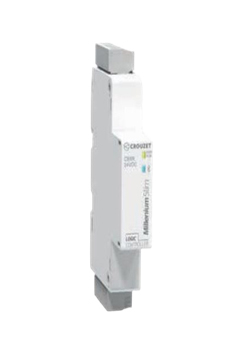
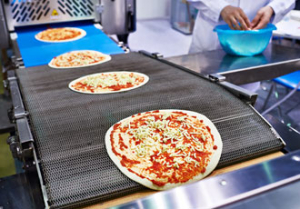
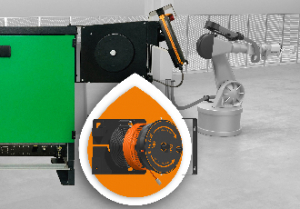
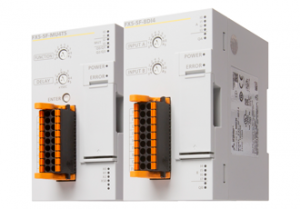







Write a comment
No comments